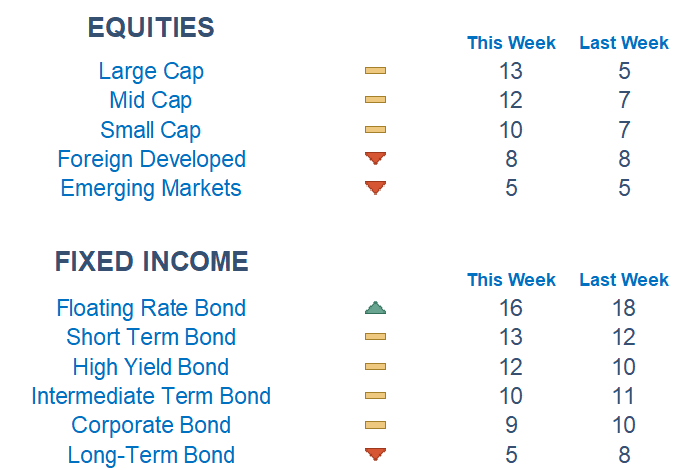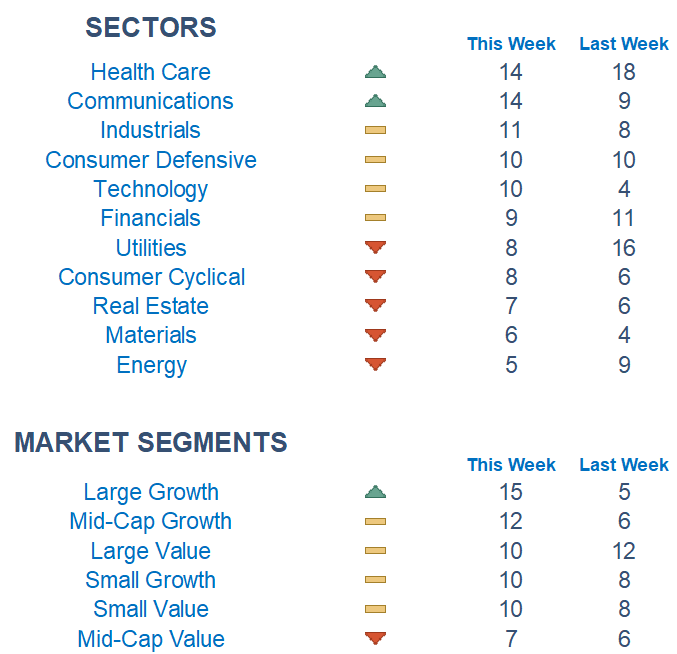Coming off a rebound last week, markets started the shortened trading week on a more uneven footing. Bond yields rose and stocks fell on thoughts that anticipation of Fed cuts have gone too far.

This Week on Wall Street - Week of January 16th
Market Commentary
Coming off a rebound last week, markets started the shortened trading week on a more uneven footing. Bond yields rose and stocks fell on thoughts that anticipation of Fed cuts have gone too far. This morning, Fed Governor Christopher Waller appeared to push back on market expectations of 6 rate cuts in 2024 with less dovish commentary than expected. “With economic activity and labor markets in good shape and inflation coming down gradually to 2%, I see no reason to move as quickly or cut as rapidly as in the past,” he noted.
This week marks the official start of earnings season as many major banks began reporting. Overall, many earnings estimates have been cut over the past quarter, with strategists expecting most companies to beat forecasts this season.
Internally, we are seeing a divergence in the market as breadth is deteriorating from overbought levels. Newton scores are showing improvement in Large Caps compared to their smaller cap counterparts after the slight rotation over the last few weeks. On the fixed income side, we are seeing more strength out of the short end of the curve as the 10-year Treasury has climbed slightly past 4%. Beneath the surface, Health Care and Communications are on top again, with Health Care losing momentum built up over the last two weeks. Energy and Materials are the laggards.
In economic news, there is an abundance of Fed speak this week. After the Waller speech today, investors will be looking for any hawkish tone in speeches to reset expectations on rate cuts for the year. The Fed has left the policy rate in the current range of 5.25% to 5.5% since July. Although the Fed has projected roughly 3 cuts in 2024, markets are pricing double that. If the economy continues to hold up and surprise to the upside as it did in 2023, the market could pare those expectations back. The goal of the Fed is still bringing inflation back to its 2% target while keeping employment near its maximum level.
Stories to Start the Week
Former President Donald Trump on Monday won the Iowa caucuses, solidifying his place as the front-runner for the 2024 Republican nomination.
A US law enforcement agency has determined that Apple can use a redesign to bypass an import ban on newer Apple Watch models stemming from its patent infringement dispute with Masimo.
The 2024 Primetime Emmy Awards were handed out in Los Angeles on Monday night, honoring the best in television. Here's who won.
A brutal and prolonged arctic blast is bringing dangerous cold to a massive swath of the US.
Boeing says there will be more quality inspections for its 737 Max aircraft after an unused door blew off an Alaska Airlines plane mid-flight.
Economic Releases This Week
Monday: MLK Holiday
Tuesday: Empire State Manufacturing Survey, Fed Gov Waller Speaks
Wednesday: Import Price Index, US Retail Sales, Fed Beige Book, Fed Gov Bowman Speaks
Thursday: Philadelphia Fed Manufacturing Survey, Housing Starts
Friday: Existing Home Sales, San Franciso Fed President Daly Speaks

What is Newton?
Our Newton model attempts to determine the highest probability of future price direction by using advanced algorithmic and high-order mathematical techniques on the current market environment to identify trends in underlying security prices. The Newton model scores securities over multiple time periods on a scale of 0-20 with 0 being the worst and 20 being the best possible score. Trend & level both matter.


Technical trading models are mathematically driven based upon historical data and trends of domestic and foreign market trading activity, including various industry and sector trading statistics within such markets. Technical trading models, through mathematical algorithms, attempt to identify when markets are likely to increase or decrease and identify appropriate entry and exit points. The primary risk of technical trading models is that historical trends and past performance cannot predict future trends and there is no assurance that the mathematical algorithms employed are designed properly, updated with new data, and can accurately predict future market, industry and sector performance.
